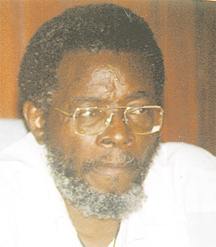Dr Roger Luncheon yesterday admitted that the three newly-appointed African Guyanese ambassadors were “able professionals”, who had been in the foreign service years before some of the others, when the $10 million libel suit filed by former president Bharrat Jagdeo continued.
Luncheon, on the stand for the last time, admitted under cross-examination by lead defence attorney Nigel Hughes that he had said previously that Ronald Gajraj, Mitra Devi Ali and Harry Narine Nawbatt were all appointed ambassadors, although they did not have any diplomatic experience.
He also said that those three persons were Indian Guyanese but disagreed that four persons of African descent were recently appointed ambassadors by the Ministry of Foreign Affairs.

Questioned by Hughes, he confirmed that George Talbot was appointed Ambassador Extraordinary; Keith George as Ambassador to Suriname and Audrey Waddell as Ambassador to the Union of South American Nations (UNASUR). He said that to the best of his knowledge the first two were African Guyanese but he was unaware of the ethnicity of Waddell, as he had never met her.
He said Talbot’s position was not a new one as the man had been acting in that post for a number of years.
Asked if it would be correct to say that all of the new appointees were in Foreign Affairs before the three previously mentioned, Luncheon, Head of the Presidential Secretariat, responded, “those three were in the foreign service but were not all home based. My recollection would suffice…”
Luncheon while describing the new ambassadors as “able professionals” denied that they had good and long-standing service. “I would hesitate to categorize them as good, exceptional and long standing. The adjectives cause me to hesitate. I have been in the administration for 19 years and I do not recall 19 years of exposure to their work and that is why I use the word able, referring to the period of time in which I have personally interacted with these officers,” he said.
He could not say how long Keith George was in the foreign service but said he had been “intimately familiar” with him over the last eight or ten years, similarly George Talbot.
Luncheon told the court that the abilities of Talbot and George were well known to the administration.
NIS contributions
Quizzed about Linmine and the missing NIS contributions, he said that from his understanding, Linmine acknowledged “the sum of money that constituted the NIS contributions was not remitted and that sum was paid to NIS by government on behalf of the employees so identified by Linmine.”
After indicating that it occurred either in 2002 or 2003, Hughes put it to Luncheon that in July 2003 a sum of $113,375,000 was paid. Asking the court’s permission to look at some documents in his possession, Luncheon read from a correspondence issued by NIS on September 28, 2007 that the sum paid was $113,375,002.
He then said that he was unaware that 57 of the affected employees had brought actions to recover the outstanding sums that had been deducted from their salaries and not credited to NIS.
Hughes then produced copies of writs filed by the employees and following no objections from the other side and after Luncheon confirmed that they were certified copies with the original court seals, they were admitted into evidence for the purpose of establishing that a claim was made against Linmine for NIS deductions.
Luncheon said he was a member of the NICIL board when the writs were filed in 2008, noting that during his outreaches in Linden, a few employees approached him complaining of unfairness.
He explained that there were missing contributions and at no time was the government “informed that this was a matter of litigation”.
Luncheon later said that there were a few persons who approached him on the issue and based on his recollection, they were all former employees and African Guyanese.
Hughes indicated that he had no further questions for the witness.
Later, under re-examination by Jagdeo’s lead lawyer Senior Counsel Bernard De Santos, Luncheon said that at the time of the privatization of Linmine African Guyanese constituted the dominant section of the workforce.
When asked if the appointment/posting of the three new ambassadors was relevant to the government’s policies and agenda, Luncheon said the appointments were based on their skills and knowledge to articulate that policy and to make representation to those countries. De Santos then closed his re-examination.
From all indications Jagdeo will not be appearing as a witness in the case.
Since the hearing into the case began last August, he has never entered an appearance.
Shortly before the judge adjourned the case to March 5, De Santos, giving a time projection, said that Office of the President media monitor Raul Kissoon would be his final witness. Raul Kissoon had earlier testified and De Santos attempted to admit a large stack of newspapers into evidence through him. Following De Santos’ submission to the court, Hughes asked if Jagdeo would be testifying. His question was met with several moments of silence before De Santos said, “the plaintiff’s case will be closed after [Raul] Kissoon”.
Jagdeo brought the libel suit following a June 28, 2010 article, titled ‘King Kong sent his goons to disrupt the conference’, which allegedly portrayed him and the government as racist. Kaieteur News’ editor Adam Harris and owner of the newspaper Glenn Lall were also named he suit.





